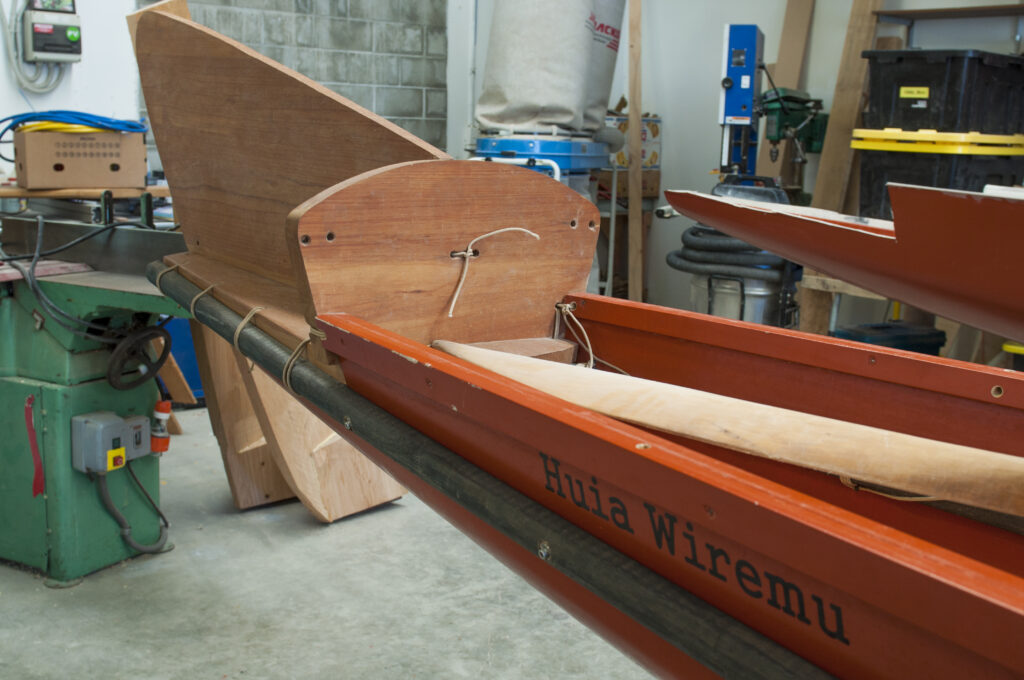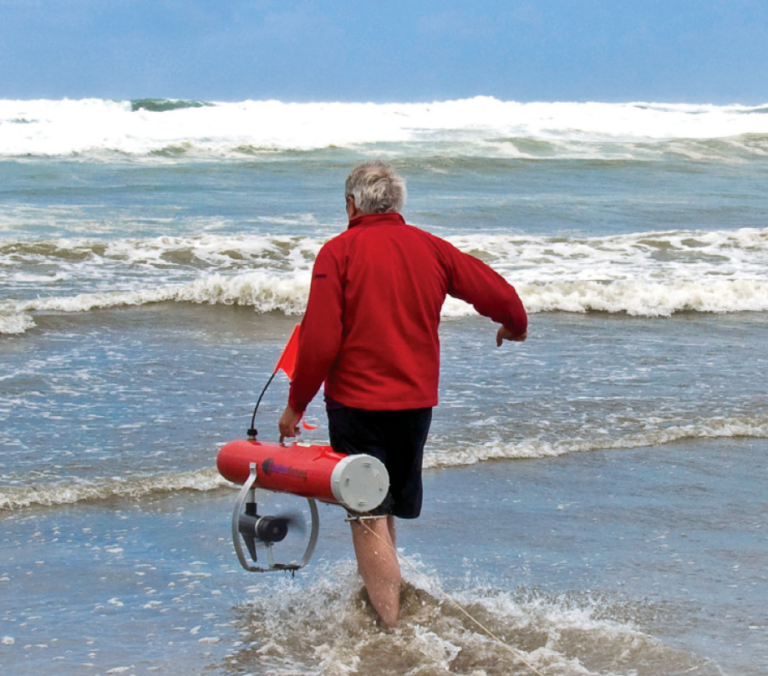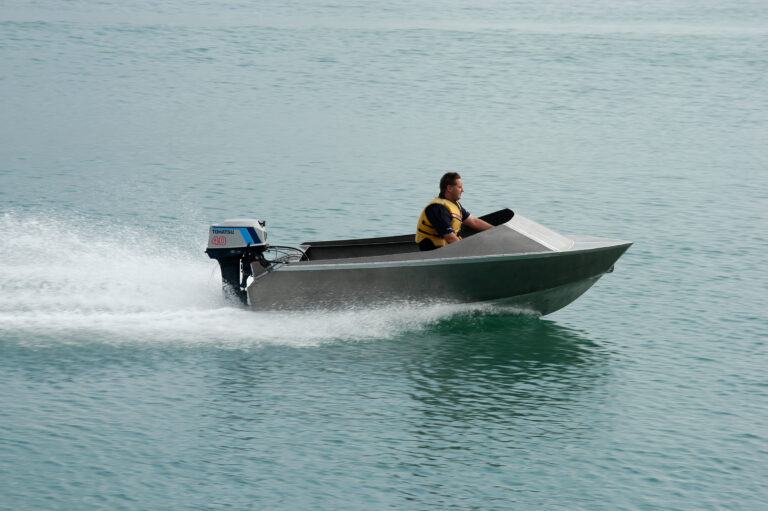A Christchurch man is on a mission to help put waka on the water with the help of modern technology
By Sue Allison
Photographs: Juliet Nicholas
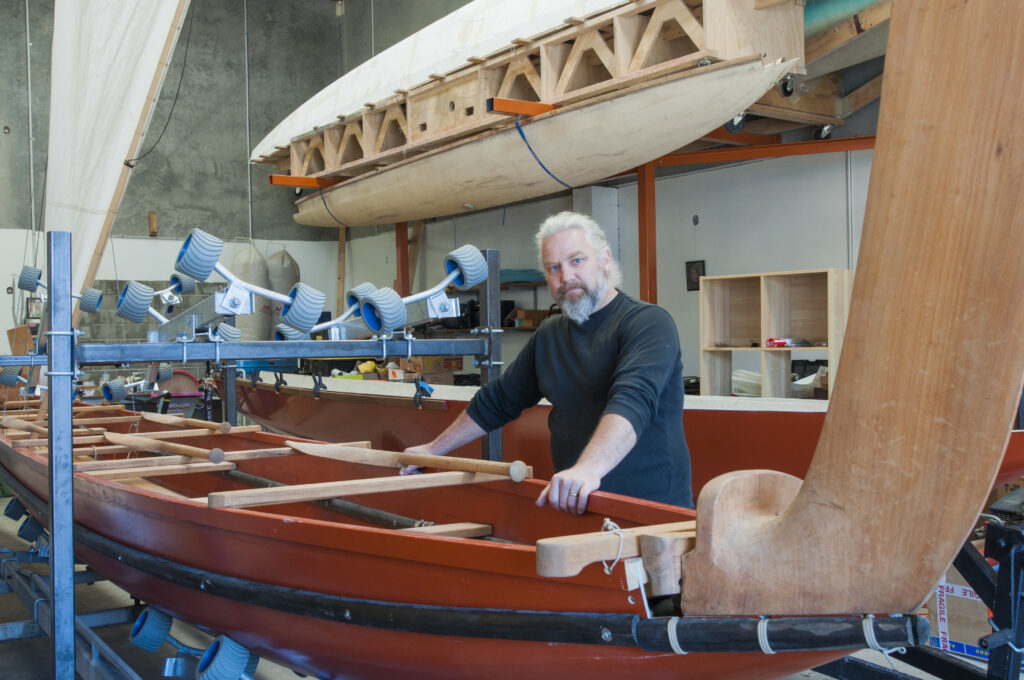
Architect, designer, sailor. Add lateral thinker, enthusiast and passionate Kiwi to the mix and you have the CV of a Christchurch man who has made it his mission to put Maori waka back on the water by marrying traditional knowledge with today’s technology.
Quentin Roake’s goal is to find a way to build waka in numbers, recreating the appearance and characteristics of traditional craft in a modern version that is portable, durable, and economical to manufacture.
“The big question is, how do you translate the traditional form of canoe into modern materials? You can’t cut down a big totara tree every time you want to make a canoe,” he says.
Quentin’s quest for a solution involved consultation with tohunga waka (canoe experts), including Hoturoa Barclay-Kerr and Sir Hekenukumaingaiwi (Hector) Busby, and led to Nga Waka Tangata kaupapa, a collaborative project to develop contemporary forms of waka. Along the way, Quentin completed a Masters degree at Otago University, with his thesis looking into the stabilising effects of tauihu and taurapa (prow and stern carvings) on traditional waka.
Quentin is about to embark on an MBIE-funded (Ministry of Business, Innovation and Employment) collaborative programme, working with Ngāi Tahu to research coastal waka with the goal of creating a contemporary form.
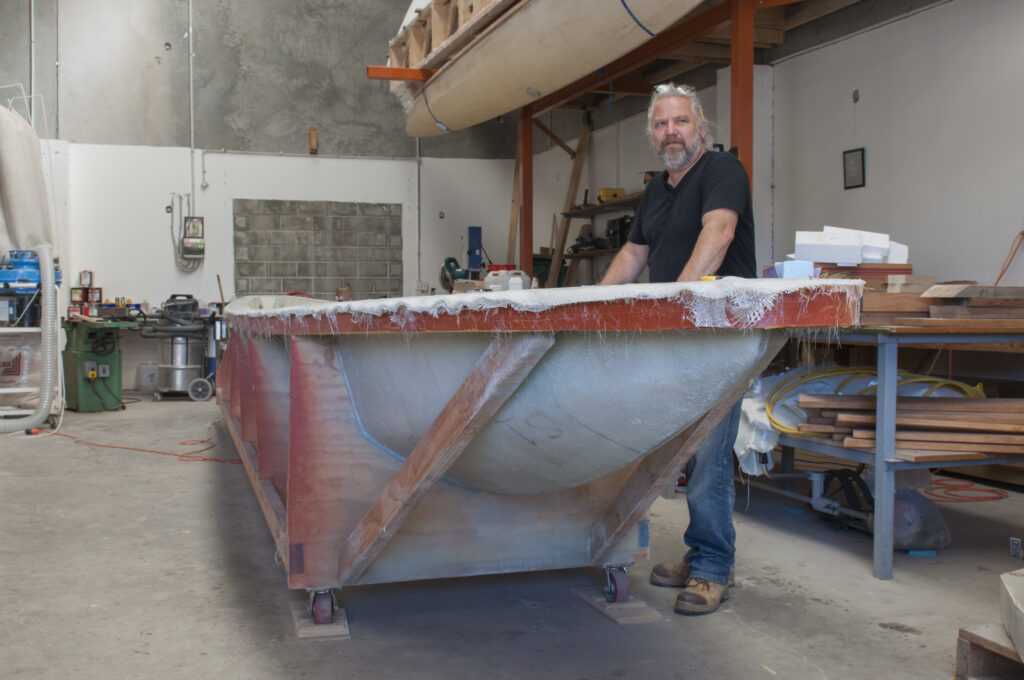
Poetry in motion
“Maori waka are poetry in motion,” says Quentin, who likens them to condensed prose where refinement adds to the depth of sentiment. “It’s like saying, ‘I wrote you a three-page letter. If I’d had more time, it would have been one.’ Waka have evolved over hundreds of years. They display an elegance that has been distilled rather than simplified over time.”
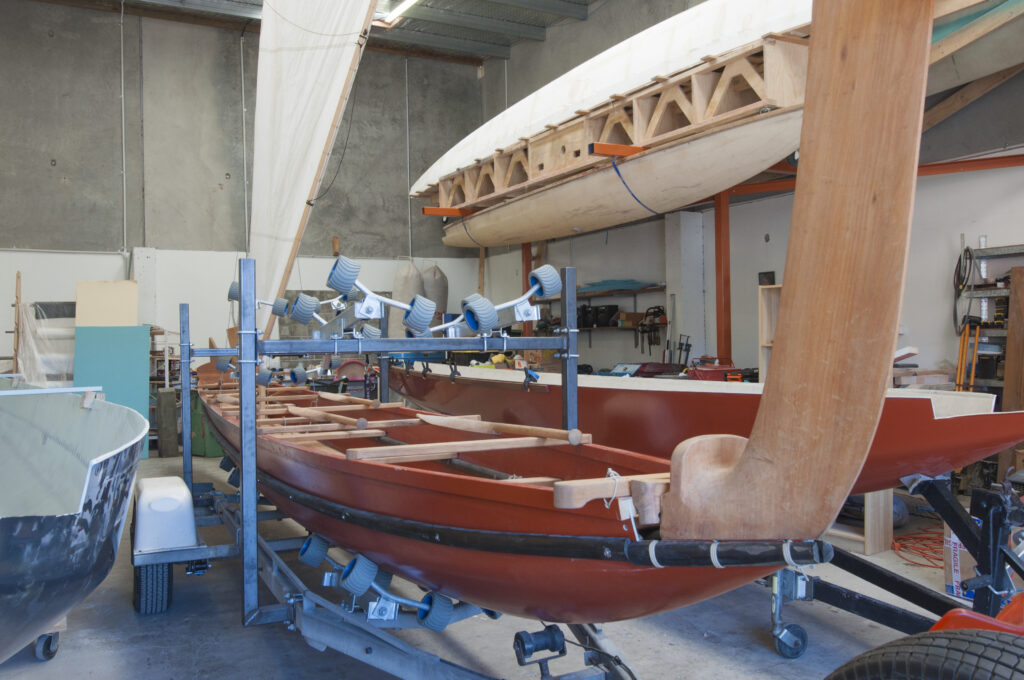
Original is very rare
Few complete original waka can be found today. During the New Zealand wars of 1845 to 1872, the British forces destroyed any canoes they found, essentially wiping out transportation. With the flow of knowledge interrupted, not many have been built since, says Quentin. “Museums, especially in the 1930s, tended to take any sort of canoe they could get their hands on, cobble something together and put some carving on them.”
Realising that a lot of construction information is embedded in surviving hulls, Quentin measured every one he came across and also pored over old photographs.
From these, he could gauge the degree of tapering of the rauawa (top boards), the rise and fall of the sheer line from the visible waterline of unloaded moored canoes, and the height of taurapa and tauihu from that of men standing alongside. High-definition digital scans of photographs revealed more about building techniques, showing tooling patterns that were difficult to make out with the naked eye.
Quentin took this information to software specialists who helped design the hulls, using digital technology to “float-test” them before cutting 1:12 scale models in high-density polystyrene foam using CNC technology. “The physical models allowed us to make adjustments until we reached the best possible option.”
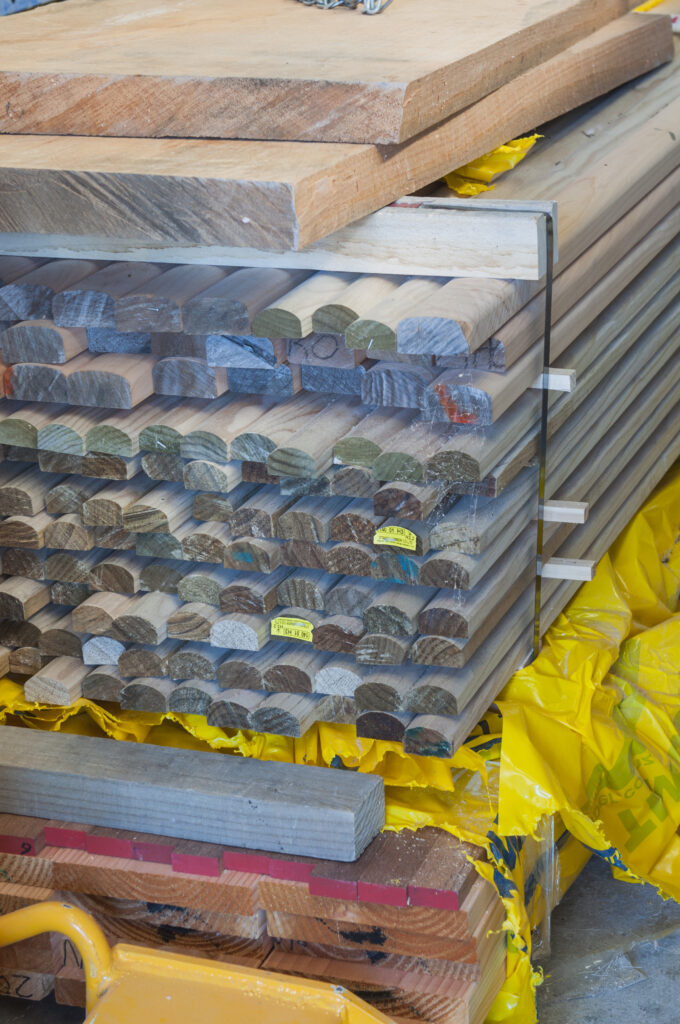
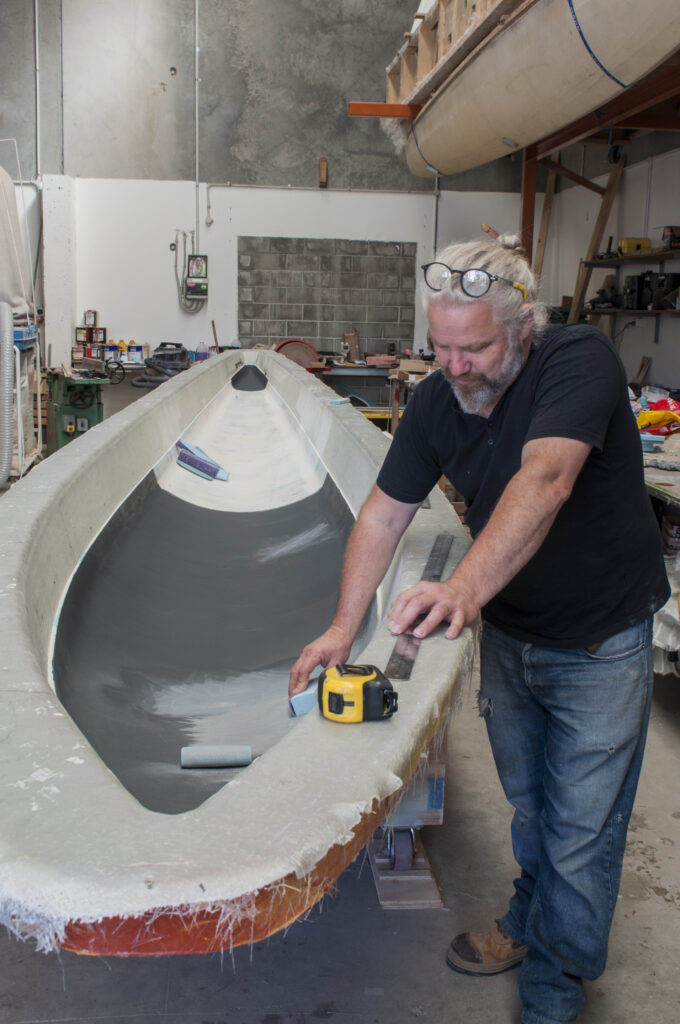
How it started
Political decisions often have far-reaching effects
When American President George Bush decided to invade Iraq in 2004, it set off a tailspin of events for the Roake family that indirectly led to Quentin’s waka project. At the time, Quentin was living in the UK with his wife, Frankie, and their three children. He had just finished restoring their 1480 Tudor manor and the plan was to sell it and, with the proceeds, move back to New Zealand. Quentin’s dream was to buy a coastal property and build a 48-foot ketch with his brother.
The manor went on the market the day American troops went into Iraq. Simultaneously, the value of the house, along with their savings in Euros, plummeted, and the value of a Kiwi ‘safe-haven’ went up. “We lost almost everything,” he says. The ketch plan was abandoned. There was just enough money to build a strip-plank Canadian canoe in the garage. But a visit to Okains Bay Maori and Colonial Museum on Banks Peninsula six weeks after returning to New Zealand led Quentin to re-think his plans. Inspired by the waka on display, he thought: “Why would I build a North American-type canoe when these have evolved here?”
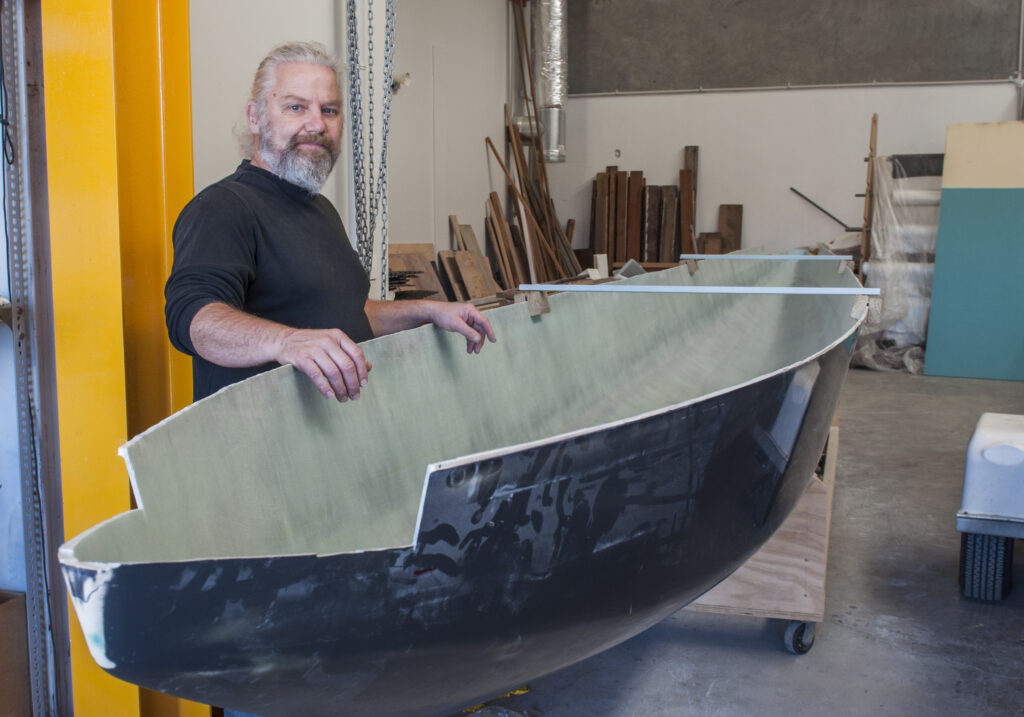

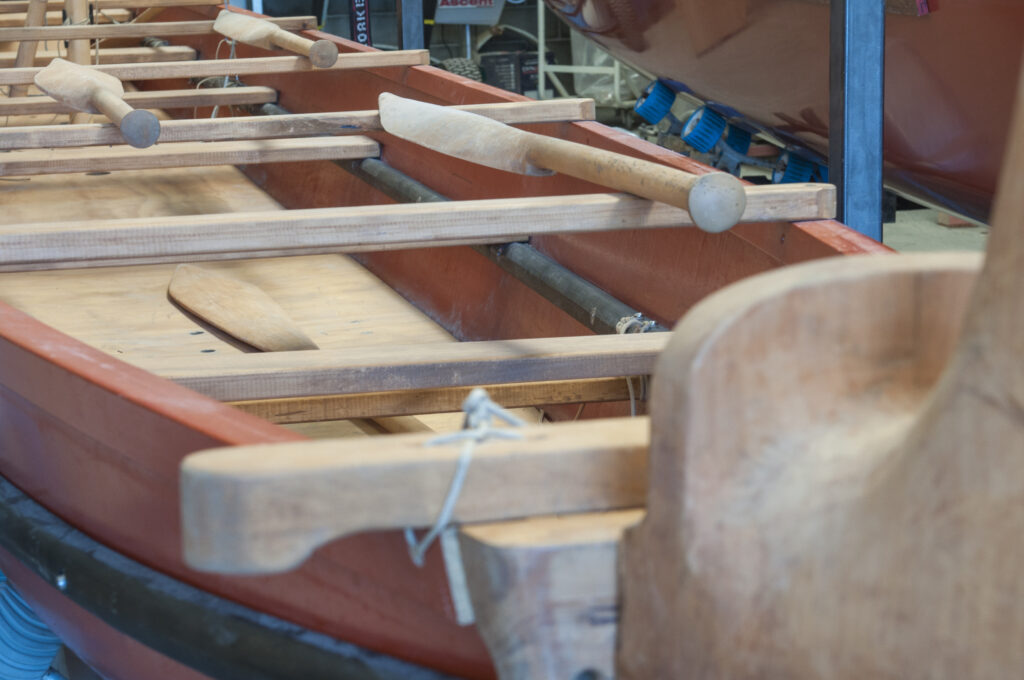
The contemporary wakas
In an open rented shed in Ferrymead, Christchurch, Quentin and Tom Walsh, his “right-hand man and voice of reason”, are building waka in a variety of sizes from 7.5 metres (three-person) to 12 metres (15-person).
Their double-skinned hulls are fibreglass with the two composite curved shells of the outer hull and inner shell are bonded together, effectively bracing each other, with the ballast sealed between them. “If you threw seven people in a single shell, it would probably fold in the middle, but this [9-metre waka] can take up to 720kg,” says Quentin.
The hull is light as well as strong and rigid. Traditional waka were very heavy, so they were difficult to transport. “We wanted these to be more portable without losing function, remembering that they are heavy displacement canoes, not lightweight competition kayaks. They need a certain inertial mass to be able to move through waves without being knocked around.”
There were several prototypes along the way. The first had a removable plywood deck with sandbags as ballast; in another, they experimented using water as ballast to avoid transporting extra weight, but, as the tanks had to be sealed inside the hull, they were hard to access.
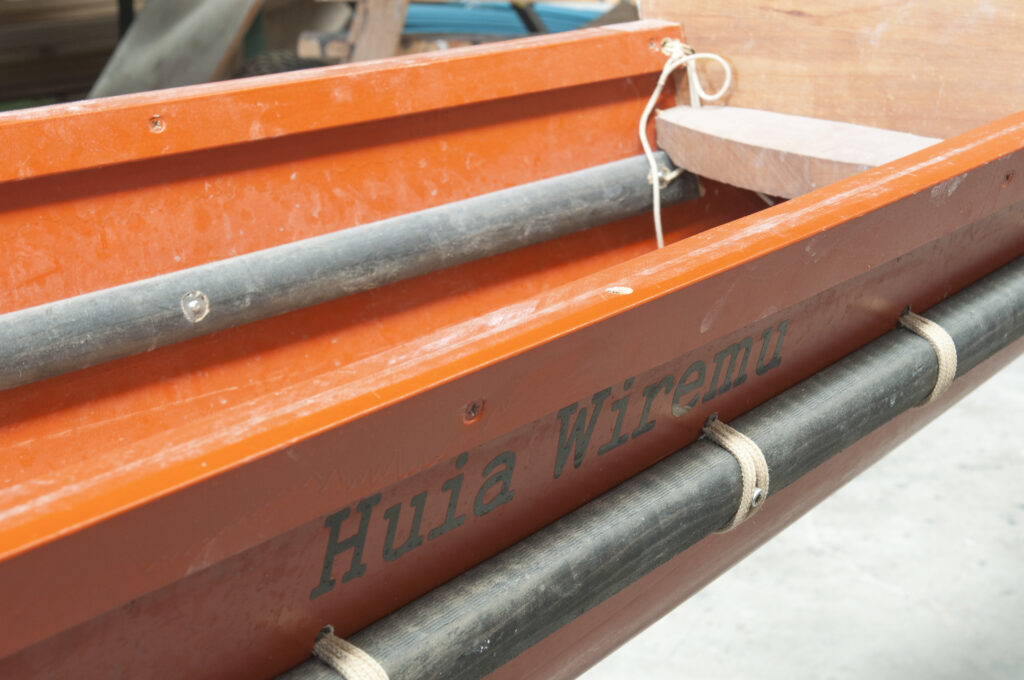
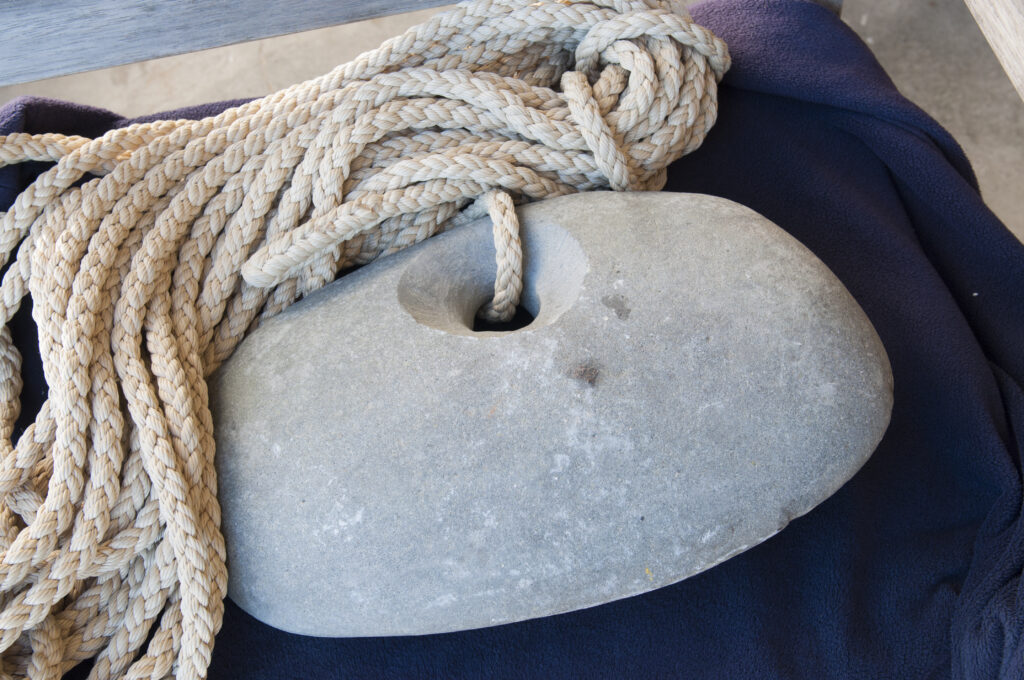
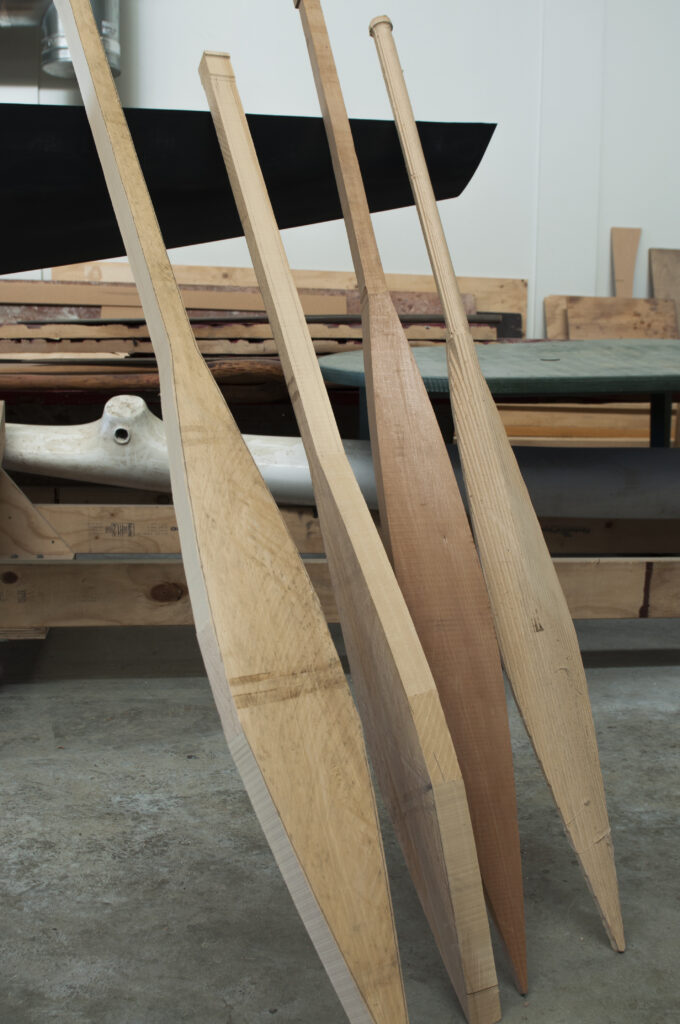
Tragedy prompts in-depth research
The loss of two dozen yachts and 19 lives in the Fastnet race of 1979 led to scrutiny of boat design. Researchers at the United States Naval Academy Hydromechanical Laboratory in Annapolis tested models of the yachts that got into trouble in tanks equipped to make scaled waves. A parallel finding was that when masts were fitted to the models, they were harder to capsize. This appeared counter-intuitive as one would expect a mast-less hull to be more stable. However researchers found that adding a mast more than doubled the roll inertia, increasing the boat’s resistance to capsize. Because the mast has weight to it and it takes energy to change direction, it absorbs and slows down the rocking motion.
The resistance to spin or moment of inertia of an object is calculated by taking each part of its total weight, multiplying it by the square of its distance from the axis of rotation, and adding all these up. An often-used example of rotational inertia is an ice skater who spins more slowly with arms outstretched. With arms by their sides, they have less resistance to spin, so they turn faster.
Similarly, the carved tauihu and taurapa on waka are not purely decorative. They are designed to moderate any rotational movement, increasing the moment of inertia and slowing the boat’s roll. The upright blade of the taurapa also helps part waves that broach the stern.
Sir Hector Busby, renowned Maori navigator and tohunga waka, recalled his uncle saying: The difference between the Maori canoe and pakeha boat is that the pakeha boat has got its keel underneath the water, but the Maori canoe has got its keel on top of the water.
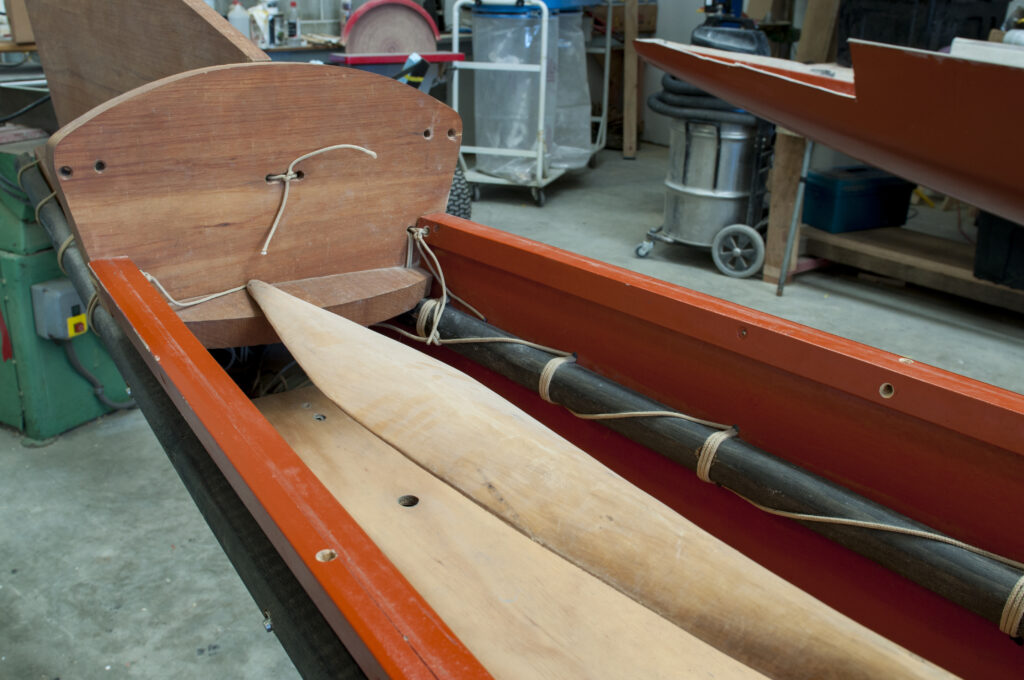
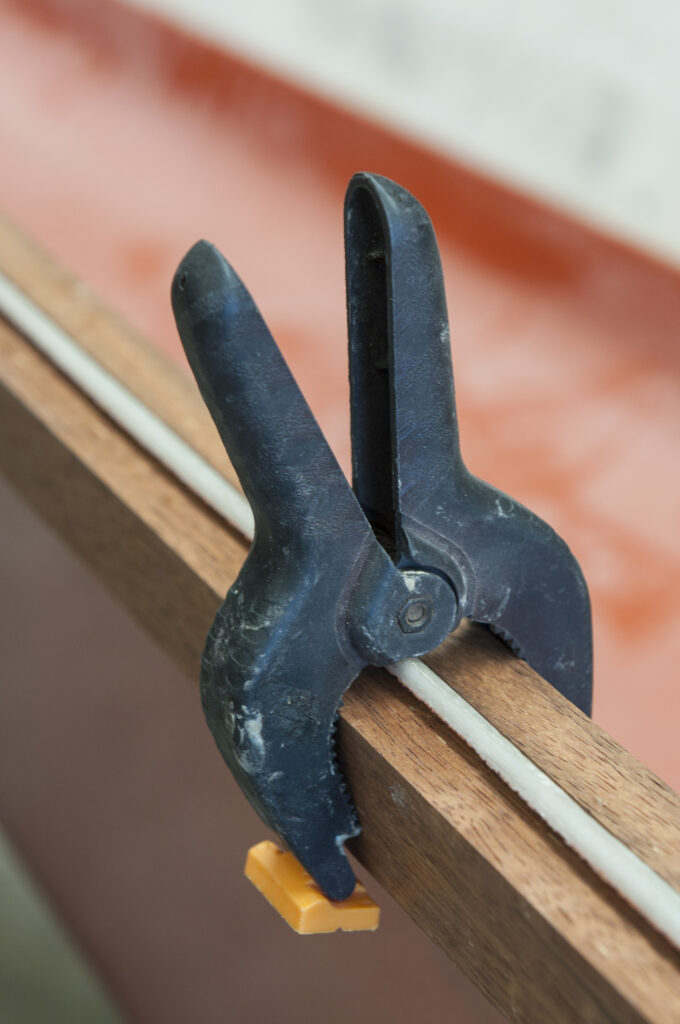
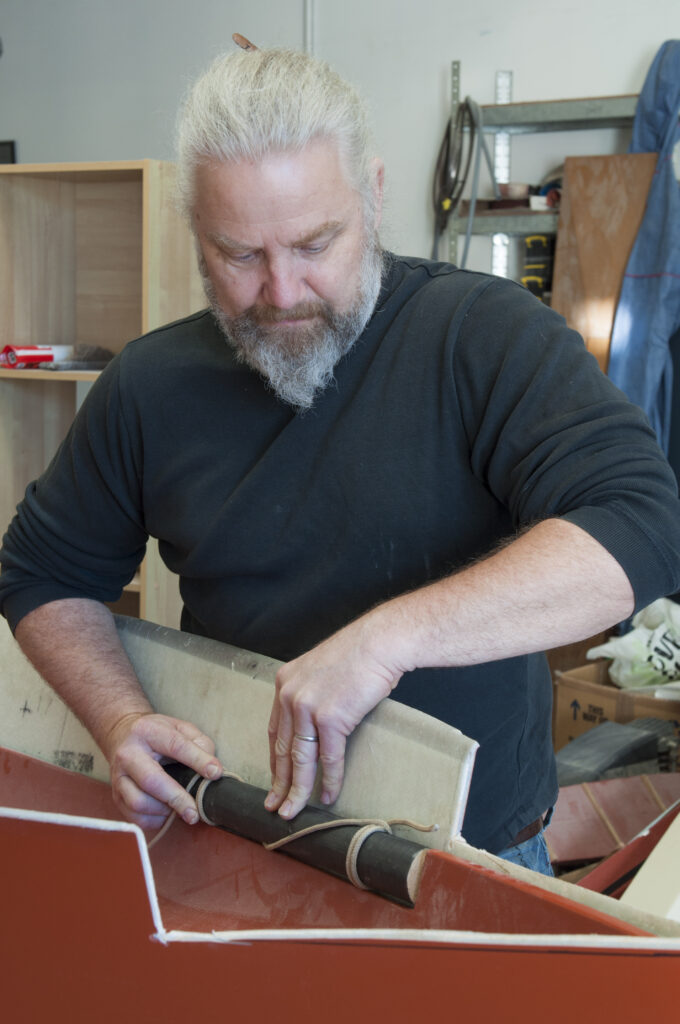
Substitute timber
Timber structure and trimmings transform the fibreglass shell into a more traditional-looking canoe. The taumanu (thwarts) were traditionally made of totara, but Quentin sometimes substitutes macrocarpa as it has a similar weight (560-580kg per cube). Kahikatea paewai (batten covering joint between dugout canoe hull and top boards) run the length of the waka, and all are lashed on using traditional methods. While not needed to seal the joint as on traditional waka, the paewai on the fibreglass hull is not just decorative. The raised batten at the shoulder of the hull helps fend off water and right the canoe when pitched or rolled by waves, in much the same way as the narrow ridge built into the chine of modern motor boats aids stability.
Quentin uses laminated cedar or kwila for the gunwale, glueing and clamping it each side of the fibreglass edge, then lashing the taumanu on top. The timber top disguises the thin 8mm fibreglass wall, giving it a solid but elegant finish. “It seems a simple thing, but it took a while to get there,” says Quentin, whose first hull had a curved lip topped with wood. He also spent time finding a suitable fibre for the lashing that would be durable but look authentic. What appears to be hand-plaited harakeke is actually UV-stable polypropylene rope made by a local company.
The finish once attained with rendered down shark liver oil mixed with ochres, was matched in marine paint.
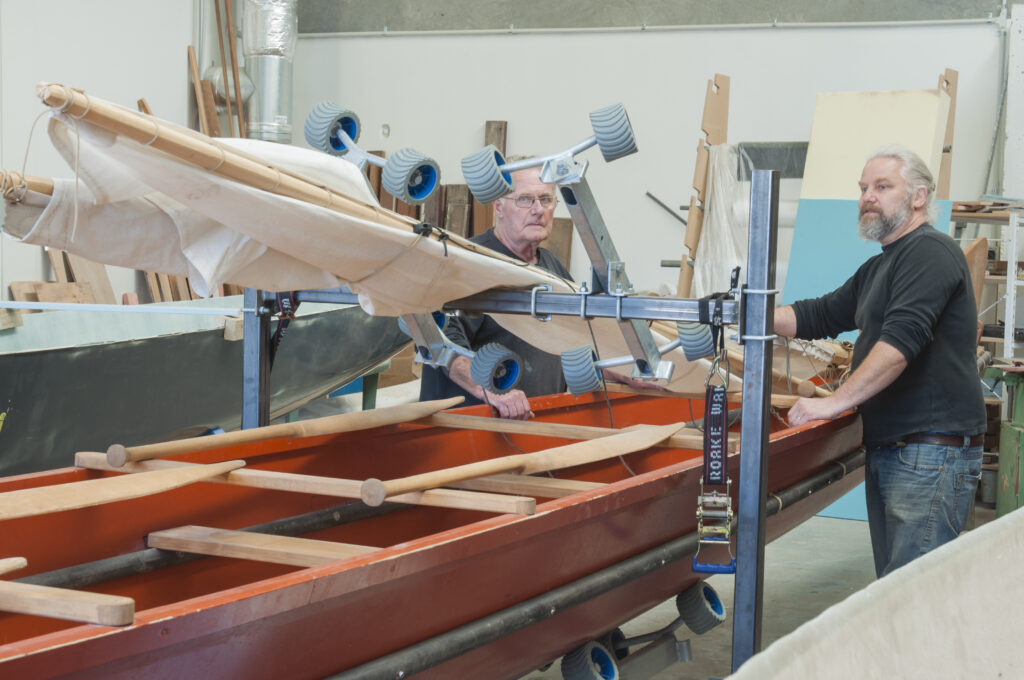
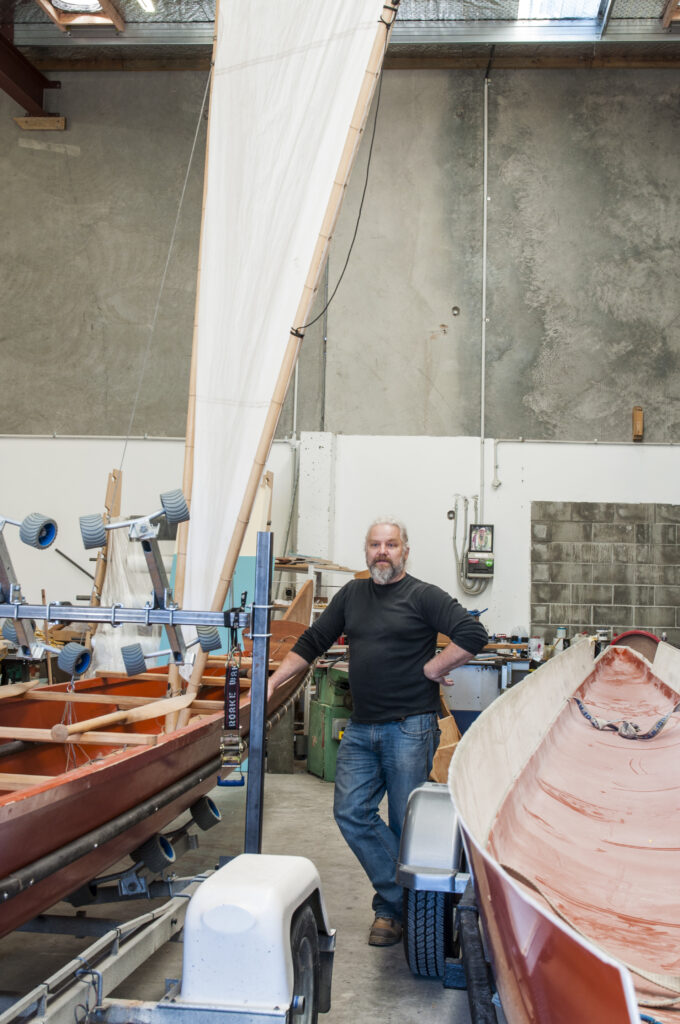
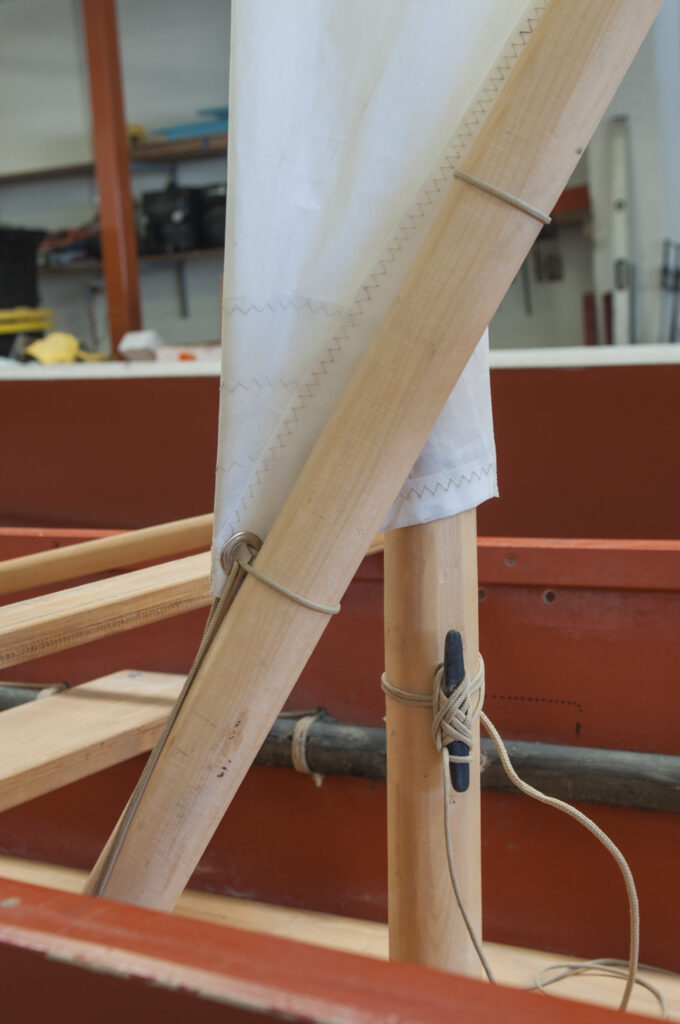
An end goal
Quentin’s goal is to perfect the design and production of the hulls to the point that he becomes irrelevant, and the fibreglass shells become, quite literally, vessels for traditional craftsmanship. In particular, the distinctive tauihu and taurapa can be roughly cut as blocks and finished by skilled carvers.
“I get excited about the possibilities of these waka in mainstream schools as well as Maori kura. They provide loads of different outlets for re-enlivening culture in a practical way,” says Quentin. “We can build them at a price point where they are affordable. They can paddle them in PE, they can make parts in woodwork, they can learn traditional crafts and language, as well as technical skills. Kapahaka has been huge in schools. These could be the equivalent of kapahaka on water.”
He also sees huge opportunities for the use of waka in tourism and recreation. “They are more stable than sea kayaks. Imagine going along the coast in something that is of here,” says Quentin, who has also designed these waka to be combined to form small double-hulled sailing canoes. He is currently fine-tuning a sailing version with a 5.4m kahikatea spar supporting the ra (sail), although he is considering using a lighter if less authentic, aluminium mast.
Throughout the process, Quentin never loses sight of his goal: “My core intention is to provide a practical means to bring our peoples together; one that recognises the importance of our founding culture, that addresses our shared history and opens pathways to a co-created future.”
To contact Quentin: [email protected]
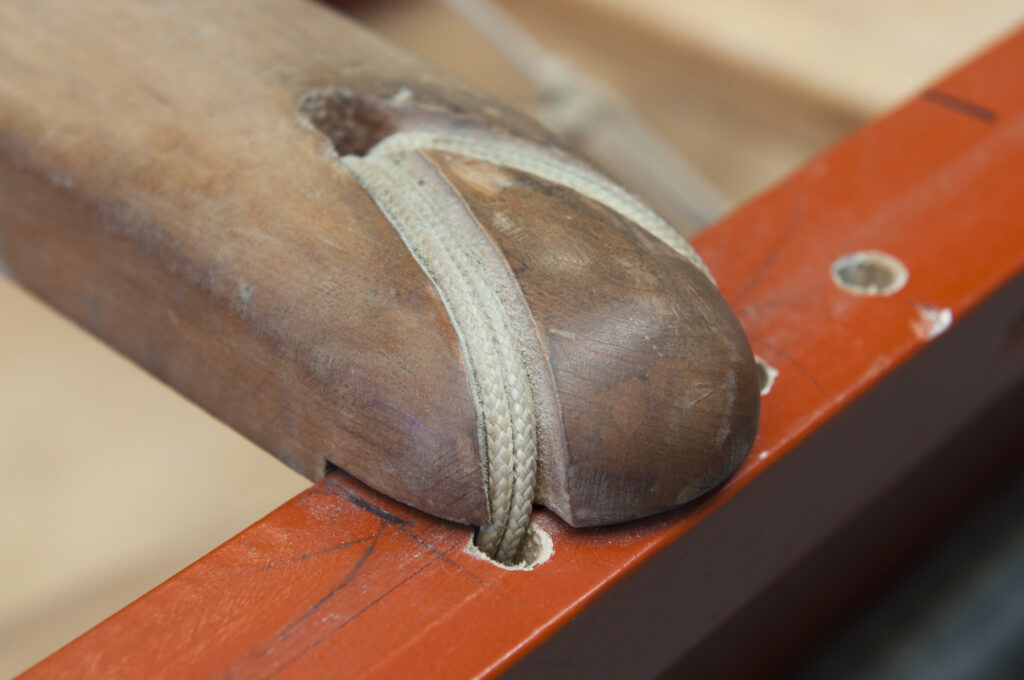
Pakeha perspective
Sometimes, you have to leave home to discover who you really are. “My father was British, and in 1989, I moved to England believing myself to be European,” says Quentin.
“However, I soon came to realise that I was, in fact, pakeha. While pakeha culture might be European in origin, it is significantly modified by Polynesian sensibilities. Sometimes, you aren’t aware how much so until you leave the country.” Quentin’s heritage also includes a bit of boating DNA. His great-grandfather was chief engineer on a steamer on the Irrawaddy River in Burma and was also in charge of a timber yard supplying teak for the Royal Navy.
Glossary
Kaitiaki Guardian or protector
Paewai Batten covering joint between dugout hull and rauawa
Ra Sail
Rauawa Top boards, attached sides of canoe above dugout hull
Tauihu Prow carving
Taumanu Thwart or strut between the rauawa (top boards)
Taurapa Stern carving
